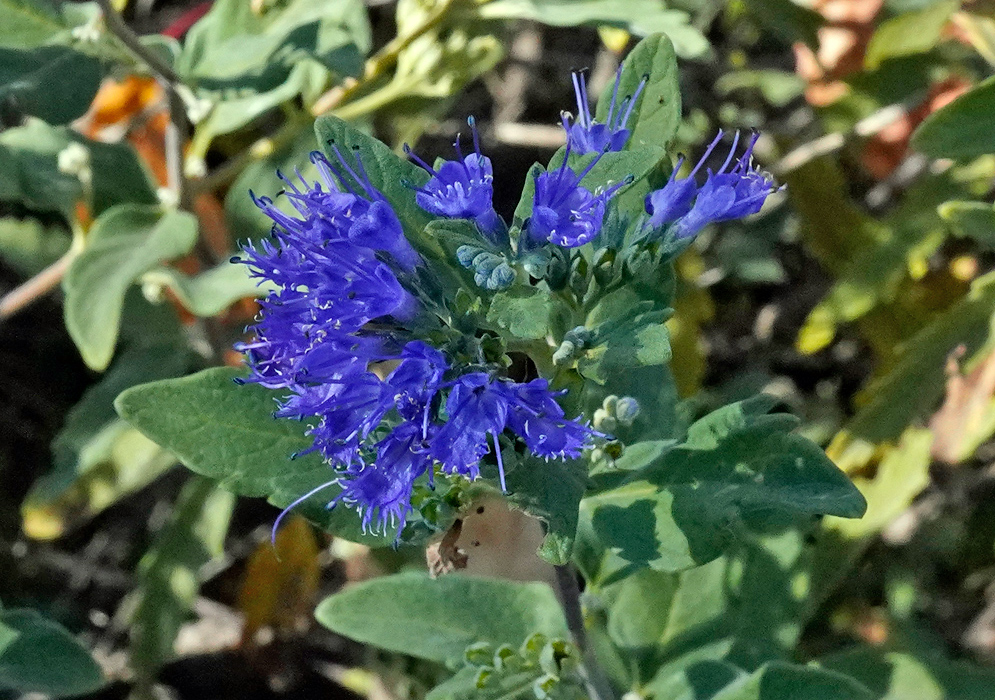This post has 11 Simple Fields-fields attached. Show fields.

Bred in Surrey, England in 1930, Caryopteris × clandonensis is a garden hybrid derived from East Asian parents (Caryopteris incana from China/Japan/Korea and C. mongholica from northern China and Mongolia). It is now widely cultivated across temperate regions of Europe and the United States as a deciduous subshrub typically 2–3 ft tall and 2–4 ft wide, forming a rounded mound that behaves herbaceous in colder winters by resprouting from the base. Stems carry opposite, softly gray-green leaves that are aromatic when bruised, and the plant is valued for late-season bloom. Flower clusters are crowded at the ends of new shoots; each bloom is a short two-lipped tube with protruding stamens that give the head a slightly fuzzy look, and repeated pinching early in the season yields denser branching and more terminals. A number of named cultivars are recognized with the Royal Horticultural Society’s Award of Garden Merit. Modern introductions add compact habits (often under 30 in.) or silvery foliage that contrasts strongly with the flowers. Because flowering occurs on new wood, gardeners in cold climates cut plants back hard in late winter to encourage vigorous shoots and a concentrated display; in mild areas it is kept as a low woody shrub that flowers repeatedly after light shearing. Photographed in Virginia.

